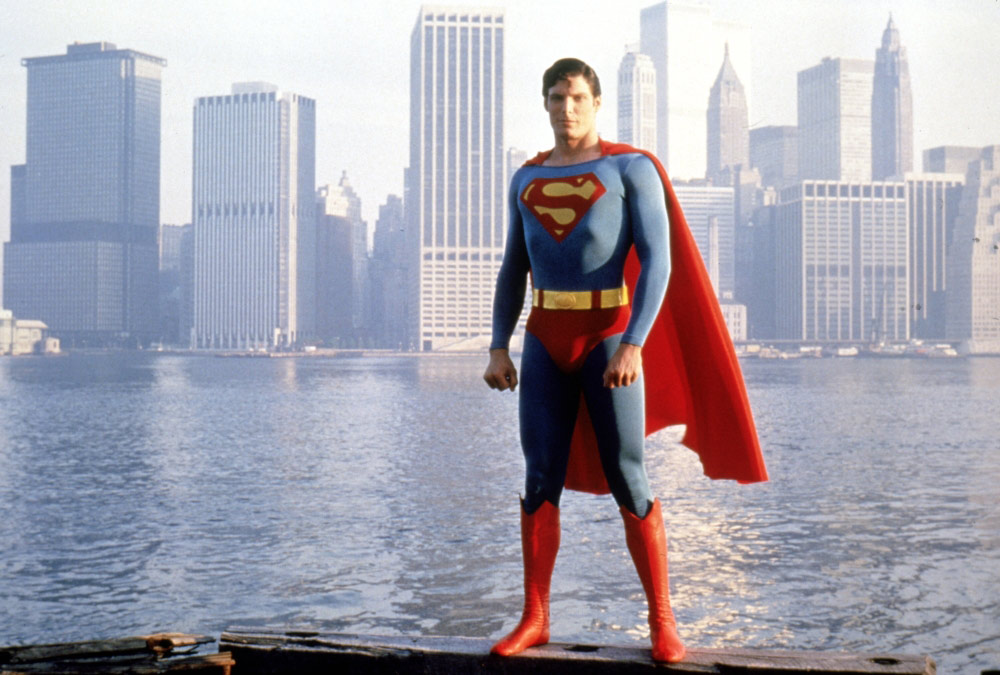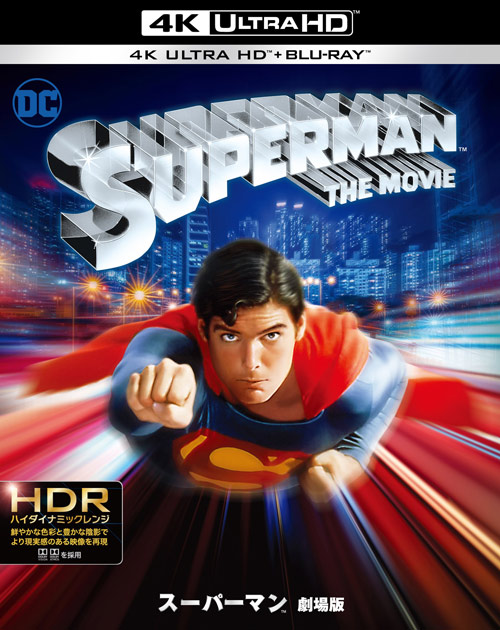
SUPERMAN and all related characters and elements are trademarks of and c DC Comics. c 2011 Warner Bros. Entertainment Inc. All rights reserved.
You too can fly in the sky! The special effects of ``Superman'' incorporate various technologies.
2019.02.09
Utilized front projection
Another type of front projection, which has been used in movies since the late 1960s, uses a half-mirror placed at a 45-degree angle between a special screen and the camera to eliminate the subject's shadow. It will not be reflected on the screen. This was used extensively in `` 2001: A Space Odyssey '' (68), in which the background scene at the beginning of the dawn of humanity is a landscape of Southwest Africa projected on a screen measuring 40 feet high by 90 feet wide. Even if you look at it now, you wouldn't notice it as a composite at first glance, but this work also utilizes front projection on the Earth and moon surfaces that can be seen from the spaceship window.
After ``2001: A Space Odyssey'', `` On Her Majesty's Secret Service '' (69), `` Tora Tora Tora! (1970) and other films, front projection was used effectively, and the form of expression in film took a major step forward. The rumor reached the Japanese film industry, and Tora Tora Tora! depicts the battle between Japan and the United States over the attack on Pearl Harbor. Kinji Fukasaku, who was one of the Japanese directors of the film, had high hopes for the film, as he was told that front projection could be used to film the flight scenes. However, as they were filming in a warehouse other than the studio, there wasn't enough light for front projection, and in the end they ended up using a traditional Japanese war movie with clouds and airplanes hanging in the background of the horizon. It was decided that the photo would be taken using the same method.
As a side note, in the mid-1970s, front projection was adopted by various Japanese film companies, and Toei Kyoto Studio purchased it for the production of " The Legend of Dinosaurs and The Birds " (1977), but before that, it was used on a trial basis. In `` Okinawa Yakuza War '' (76), which I used, I tried using it directly without any technical testing, and found that the focal distance between the background displayed on the screen and the subject standing in the foreground did not match, and a huge amount of time was wasted. It is said that he did.
Now, ``Superman'' must be able to fly with unprecedented freedom. Therefore, Dennis Coop, a veteran British cameraman who was in charge of front projection photography, decided to make full use of a technique that allows the camera to move freely to make the standing Superman appear to be flying. . Using a moving vehicle, crane, and a front projection system equipped with two zoom lenses, when the camera zooms in on the subject in the foreground, the projection lens that projects the background also zooms in, so you can see exactly what's there. Mobile vehicles and cranes will also be used. In the finished video, only the subject in the foreground appeared to be approaching the camera, which could be used to create a video of Superman flying toward the screen.

Superman and all related characters and elements are trademarks of and c DC Comics. c 2011 Warner Bros. Entertainment Inc. All rights reserved.
In this way, a free flight scene was filmed in which the audience felt like they were flying, but Superman's cape unexpectedly posed a problem. Of course, the cape doesn't look realistic unless it flaps around during flight, but if you just use a fan to blow the air around it, it will wrap around your body and won't make it flutter. Therefore, a battery-powered fishing rod-like device was installed in the cape, and the movement and speed of the cape could be controlled with a remote control, suggesting that Superman was able to fly far from the ground due to his attention to detail. Dew.
The advertising copy for ``Superman'' in America was ``You'll Believe a Man Can Fly,'' and in Japan it was ``You, too, can fly!'' In the past, when animation was used to disguise flight scenes, no one would have thought to use this copy. This Japanese-American copy is also a word that loudly indicates the achievement of special effects.
[Reference materials]
“Kinema Junpo” (Kinema Junposha)
"Motion Picture and Television Technology" (Japan Film and Television Technology Association)
"Cinematography" (Japan Cinematographers Association)
"Superman Motion Picture Anthology Special Value Pack" Blu-ray (Warner Bros. Home Entertainment)
“The Making of Superman the Movie” (David Michael Petrou/Warner Books)
Text: Guinea Pig Yoshida
Born in 1978. Movie critic. Another name is Ichiro Yoshida. He has written for ``Eiga Hiho'', ``Kinema Junpo'', ``Eiga Geijutsu'', ``Scenario'', etc. His books include ``Introduction to film criticism! ” (Yosensha), co-authored with “Film director Takeshi Kitano. ” (Film Art Company) and others

“Superman the Movie <4K ULTRA HD & Blu-ray Set> (2-disc set)”
Released on February 6th ¥5,990 + tax
warner bros home entertainment
SUPERMAN and all related characters and elements are trademarks of and c DC Comics. c 2011 Warner Bros. Entertainment Inc. All rights reserved.

